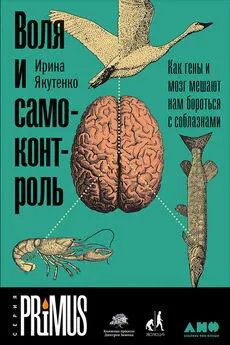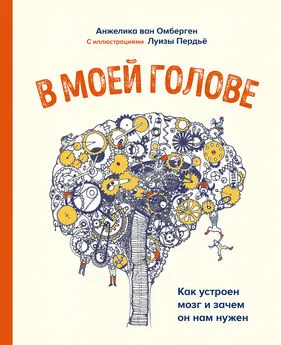Рейчел Херц - Почему мы едим то, что едим [Наука о том, как наш мозг диктует нам, что есть]
- Название:Почему мы едим то, что едим [Наука о том, как наш мозг диктует нам, что есть]
- Автор:
- Жанр:
- Издательство:Литагент 5 редакция
- Год:2021
- Город:Москва
- ISBN:978-5-04-097490-0
- Рейтинг:
- Избранное:Добавить в избранное
-
Отзывы:
-
Ваша оценка:
Рейчел Херц - Почему мы едим то, что едим [Наука о том, как наш мозг диктует нам, что есть] краткое содержание
Какие музыкальные жанры лучше всего подчеркивают вкус красного вина? Почему нам хочется калорийной пищи, когда нас постигают неудачи? Как наша личность соотносится с предпочтением сладкого или соленого?
Эта книга, словно чуткий проводник, помогает читателю уловить и распознать сенсорные, психологические и физиологические факторы, лежащие в основе пищевых привычек. С этим знанием вы сможете сделать каждый прием пищи осознанным и здоровым, а также получать только удовольствие от еды.
Почему мы едим то, что едим [Наука о том, как наш мозг диктует нам, что есть] - читать онлайн бесплатно ознакомительный отрывок
Интервал:
Закладка:
24. C. Noel and R. Dando, «The effect of emotional state on taste perception», Appetite 95 (2015) 89–95.
25. T. P. Heath et al., «Human taste thresholds are modulated by serotonin and noradrenaline», Journal of Neuroscience 26 (2006): 12664-12671.
26. S. U. Maier, A. B. Makwana, and T. A. Hare, «Acute stress impairs selfcontrol in goal-directed choice by altering multiple functional connections within the brain’s decision circuits», Neuron 87 (2015): 621–631.
27. R. F. Baumeister et al., «Ego depletion: Is the active self a limited resource?» Journal of Personality and Social Psychology 74 (1998): 1252–1265.
28. Для справки см. M. T. Gailliot et al., «Self-control relies on glucose as a limited energy source: Willpower is more than a metaphor», Journal of Personality and Social Psychology 92 (2007): 325–336.
ПРИМЕЧАНИЯ К СТР. 249–259
29. Там же.
30. J. D. Teasdale et al., «Prevention of relapse/recurrence in major depression by mindfulness-based cognitive theraphy», Journal of Consulting and Clinical Psychology 68 (2000): 615–623.
31. M. Ricard, A. Lutz, and R. J. Davidson, «Mind of the meditator», Scientific American 311 (2014): 38–45.
32. Для справки см. K. Hotting and B. Roder, «Beneficial effects of physical exercise on neuroplasticity and cognition», Neuroscience & Biobehavioral Reviews 37 (2013): 2243–2257.
33. A. F. Kramer et al., «Ageing, fitness and neurocognitive func-tion», Nature 400 (1999): 418–419.
34. A. Z. Burzynska et al., «Physical activity is linked to greater moment-tomoment variability in spontaneous brain activity in older adults», PLoS ONE 10 (2015): e0134819.
35. J. Joyce et al., «The time course effect of moderate intensity exercise on response execution and response inhibition», Brain and Cognition 71 (2009): 14–19.
1. «Kantar Media Reports U.S. Advertising Expenditures Increased 0.9 Percent in 2013, Fueled by Larger Advertisers», BusinessWire, March 25, 2014, http://www.businesswire.com/ news/home/20140325006324/en/Kantar-Media-Reports-U.S.-Advertising-Expenditures-Increased#.VWDE3PlVhHy.
2. A. Krishna, Customer Sense: How the 5 Senses Influence Buying Behavior (New York and London: Palgrave Macmillan, 2013).
3. «The Science of Sensory Marketing», Harvard Business Review, March 2015, https://hbr.org/2015/03/the-science-of-sensory-marketing.
4. R. S. Elder and A. Krishna, «The effects of advertising copy on sensory thoughts and perceived taste», Journal of Consumer Research 36 (2010): 748–756.
5. J. Ogden et al., «Distraction, the desire to eat and food intake: Towards an expanded model of mindless eating», Appetite 62 (2013): 119–126.
6. P. Rozin et al., «What causes humans to begin and end a meal? A role for memory for what has been eaten, as evidenced by a study of multiple meal eating in amnesic patients», Psychological Science 9 (1998): 392–396.
ПРИМЕЧАНИЯ К СТР. 260–264
7. E. L. Kenney and S. L. Gortmaker, «United States adolescents’ television, computer, videogame, smartphone, and tablet use: Associations with sugary drinks, sleep, physical activity, and obe-sity», Journal of Pediatrics 182 (2016): 144–149.
8. L. Pope, L. Latimer, and B. Wansink, «Viewers vs. Doers: The relationship between watching food television and BMI», Appetite 90 (2015): 131–135.
9. Ogden et al., «Distraction, the desire to eat and food intake».
10. J. Moray et al., «Viewing television while eating impairs the ability to accurately estimate total amount of food consumed», Bariatric Nursing and Surgical Patient Care 2 (2007): 71–76.
11. B. Wansink and S. Park, «At the movies: How external cues and perceived taste impact consumption volume». Food Quality and Preference 12 (2001): 69–74; F. Bellisle and A.M. Dalix, «Cognitive restraint can be offset by distraction, leading to increased meal intake in women», American Journal of Clinical Nutrition 74 (2001): 197–200.
12. K. Ohla et al., «Visual-gustatory interaction: Orbitofrontal and insular cortices mediate the effect of high-calorie visual food cues on taste pleasantness», PLoS ONE 7 (2012): e32434.
13. Carole Cadwalladr, «Jamie Oliver’s FoodTube: Why He’s Taking the Food Revolution Online», Guardian, June 22, 2014, http://www.theguardian.com/lifeandstyle/2014/jun/22/ jamie-oliver-food-revolution-online-video.
14. K. E. Demos, T. F. Heatherton, and W. M. Kelley, «Individual differences in nucleus accumbens activity to food and sexual images predict weight gain and sexual behavior», Journal of Neuroscience 32 (2012): 5549–5552.
15. R. B. Lopez et al., «Neural predictors of giving in to temptation in daily life», Psychological Science 25 (2014): 1337–1344.
16. Elise Hu, «Koreans Have An Insatiable Appetite for Watching Strangers Binge Eat», The Salt, NPR, March 24, 2015, http:// www.npr.org/sections/thesalt/2015/03/24/392430233/kore-ans-have-an-insatiable-appetite-for-watching-strangers-binge-eat.
17. «Caloric Intake From Fast Food Among Children and Adolescents in the United States 2011–2012», NCHS Data Brief No. 213, September 2015, National Center for Health Statistics, Centers for Disease Control and Prevention, http://www.cdc.gov/nchs/ data/databriefs/db213.htm.
ПРИМЕЧАНИЯ К СТР. 265–267
18. L. Johnson et al., «Energy-dense, low-fiber, high-fat dietary pattern is associated with increased fatness in childhood», American Journal of Clinical Nutrition 87 (2008): 846–854.
19. «Childhood Obesity Facts», Centers for Disease Control and Prevention, http://www.cdc.gov/healthyschools/obesity/facts.htm.
20. Khushbu Shah, «McDonald’s Turns Teacher’s Weight Loss Story Into Propaganda Film to Show in Schools», Eater, October 12, 2015, http://www.eater.com/2015/10/12/9507663/mcdonalds-weight-loss-story-propaganda-film-for-schools; Anna Almendrala, «Teacher John Cisna Says McDonald’s Diet Helped Him Lose Weight – But Is It Actually Healthy?» Huffington Post, January 8, 2014, http://www.huffingtonpost.com/2014/01/08/mcdon-alds-diet_n_4557698.html.
21. Там же.
22. См. Bettina Elias Siegel at http://www.thelunchtray.com.
23. Brenna Houck, «McDonald’s Axes Controversial School Nutrition Campaign», Eater, May 14, 2016, http://www.eat-er.com/2016/5/14/11676156/mcdonalds-ends-school-nutri-tion-campaign-weight-loss; https://www.washingtonpost. com/news/wonk/wp/2016/05/13/mcdonalds-is-no-longer-telling-kids-in-schools-that-eating-french-fries-most-days-is-fine/?utm_term=.12a14ec9bf2a.
24. S. M. McClure et al., «Neural correlates of behavioral preference for culturally familiar drinks», Neuron 44 (2004): 379–387.
25. T.N. Robinson et al., «Effects of fast food branding on young children’s taste preferences», Archives of Pediatrics and Adolescent Medicine 161 (2007): 792–797.
26. «Snack FACTS 2015», UConn Rudd Center for Food Policy and Obesity, November 2015.
27. E. J. Boyland et al., «Food commercials increase preference for energy-dense foods, particularly in children who watch more television», Pediatrics 128 (2011): e93-e100.
28. J. L. Harris, J. A. Bargh, and K. D. Brownell, «Priming effects of television food advertising on eating behavior», Health Psychology 28 (2009): 404–413.
29. Там же.
ПРИМЕЧАНИЯ К СТР. 268–276
30. Rick Nauert, «Is Obesity a Product of Market Greed?» PsychCentral, http://psychcentral.com/news/2015/08/31/is-obesity-a-product-of-market-greed/91616.html.
31. Robinson et al., «Effects of fast food branding on young children’s taste preferences».
32. L. Enax et al., «Food packaging cues influence taste perception and increase effort provision for a recommended snack product in children», Frontiers in Psychology 6 (2015): 882.
33. M. C. Campbell et al., «Kids, cartoons, and cookies: Stereotype priming effects on children’s food consumption», Journal of Consumer Psychology 26 (2016): 257–264.
34. Bleich et al., «Reducing sugar-sweetened beverage consumption by providing caloric information».
35. Форма поощрения в магазине Trader Joe’s в Род-Айленде, 2016.
36. U. R. Karmarkar and B. Bollinger, «BYOB: How bringing your own shopping bags leads to treating yourself and the environment», Journal of Marketing 79 (2015): 1-15.
37. H. Aarts and A. Dijksterhuis, «The silence of the library: Environment, situational norm, and social behavior», Journal of Personality and Social Psychology 84 (2003): 18–28.
38. S. K. Hui, E. T. Bradlow, and P. S. Fader, «Testing behavioral hypotheses using an integrated model of grocery store shopping path and purchase behavior», Journal of Consumers Research 36 (2009): 478–493.
39. M. Hennecke and A. M. Freund, «Identifying sucess on the process level reduces negative effects of prior weight loss on subsequent weight loss during a low-calorie diet», Applied Psychology: Health and WellBeing 6 (2014): 48–66.
40. C. B. Zhong and K. Liljenquistk, «Washing away your sins», Science 313 (2006): 1451–1452.
41. K. J. Eskine, «Wholesome foods and wholesome morals? Organic foods reduce prosocial behavior and harshen moral judg-ments», Social Psychological and Personality Science 4 (2013): 251–254.
42. N. Mazar and C. B. Zhong, «Do green products make us better people?» Psychological Science 21 (2010): 494–498.
43. C. B. Zhong and S. E. DeVoe, «You are how you eat: Fast food and impatience», Psychological Science 21 (2010): 619–622.
ПРИМЕЧАНИЯ К СТР. 276–288
44. B. Anderson et al., «Fast food consumption and obesity among Michigan adults», Preventing Chronic Disease 8 (2011): A71.
45. M. Rao et al., «Do healthier foods and diet patterns cost more than less healthy options? A systematic review and meta-analy-sis», BMJ Open 3 (2013): e004277.
46. «Wage statistics for 2014», Social Security Administration, https:// www.ssa.gov/cgi-bin/netcomp.cgi?year=2014.
47. «Food Prices and Spending», U.S. Department of Agriculture Economic Research Service, http://www.ers.usda.gov/da-ta-products/ag-and-food-statistics-charting-the-essentials/food-prices-and-spending.aspx. Люди с высоким доходом тратят на еду примерно 7,5 % дохода.
1. Herz, The Scent of Desire.
2. C. A. Reid etal., «Scent-evoked nostalgia», Memory 23 (2015):157–166.
3. M. L. Shoup, S. A. Streeter, and D. H. McBurney, «Olfactory comfort and attachment within relationships», Journal of Applied Social Psychology (2008): 2954–2963.
4. R. S. Herz, «Odor-evoked memory», in J. Decety and J. Cacioppo, eds., The Oxford Handbook of Social Neuroscience (New York: Oxford University Press, 2011), 265–276.
5. Lou Reed, «Walk on the Wild Side», on Transformer, 1972.
6. K. Q. Chan et al., «What do love and jealousy taste like?» Emotion 13 (2013): 1142–1149.
Читать дальшеИнтервал:
Закладка:
![Обложка книги Рейчел Херц - Почему мы едим то, что едим [Наука о том, как наш мозг диктует нам, что есть]](/books/1061252/rejchel-herc-pochemu-my-edim-to-chto-edim-nauka-o-t.webp)









